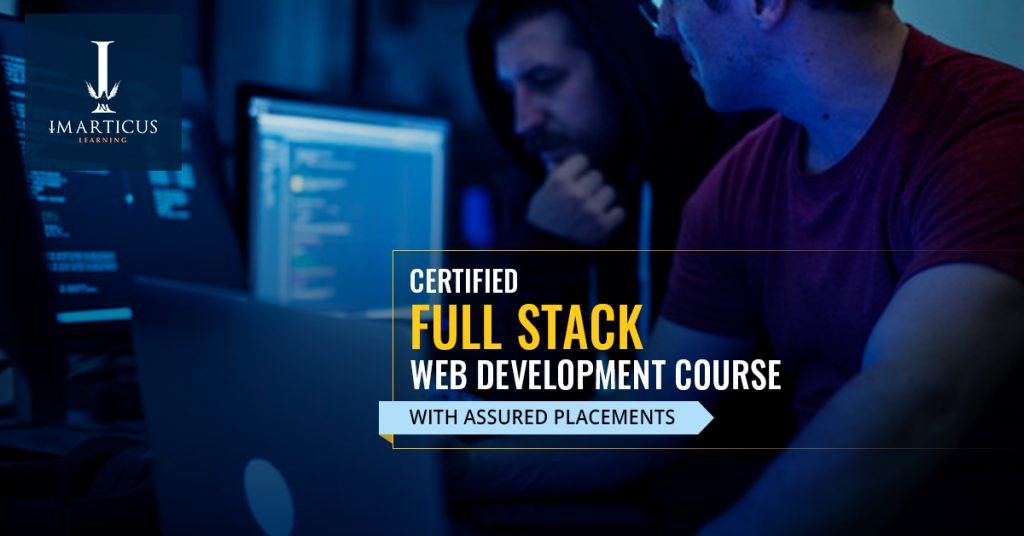When it comes to web development, it is very helpful if you have someone on your team who is a jack of all trades. Now, what does that mean? It means that there is someone who can build the user interface (UI) or front-end of your app. These developers can also help in building a server at the back-end and then connecting these two. To do that, the web developer needs to be versatile and should also be proficient in programming languages that serve this purpose. These developers can help the core development team at various stages of development. They also help in saving considerable time to complete the development of the web-based app.

In other words, the full-stack developer can handle both the front-end and the back-end development roles. Together the front-end and the back-end are known as full-stack. This is how the term full-stack developer came into existence.
Types of Full-Stack Developer
Now, there are various types of full-stack developers based on the programming languages used to handle the UI in the front end and the server in the back-end. We are providing you with a list of stacks. But this is not an exhaustive list, as mentioning all the stacks might make this blog a bit too long. Here are the types of stacks –
Popular Stacks
- LEMP stack: JavaScript - Linux - Nginx - MySQL - PHP
- LAMP stack: JavaScript - Linux - Apache - MySQL – PHP
- MERN stack: JavaScript - MongoDB - Express - ReactJS - Node.js
- MEAN stack: JavaScript - MongoDB - Express - AngularJS - Node.js
- Ruby on Rails: JavaScript - Ruby - SQLite – Rails
- Django stack: JavaScript - Python - Django - MySQL
What Does A Full Stack Developer Do?
As we have already mentioned, a full-stack developer helps to handle both the front-end and the back-end of the web development project. Full stack web developers are qualified enough to develop both client-end along with the server software. They should be proficient in HTML and CSS, but they should also be capable of:
- Programming a browser using programming languages like JavaScript, jQuery, Vue, React or Angular
- Programming a server using programming languages like PHP, ASP, Python, or Node
- Programming a database using programming languages like SQL, SQLite, or MongoDB
The need to engage a full-stack developer depends on the size and scalability of the web app or software. Let us take an example to explain this. Suppose you need a small independent group or forum for gamers. This project can be easily made with the help of a few people only. You need to make a small simulator only, so a back-end developer and a front-end developer are enough for this project. The team could also use one full-stack developer who can handle the development of the entire app.
But if you require a large web application like a food delivery app or an e-commerce app which has a strong potential for scaling, then it requires an entire team consisting of everyone. This will include dedicated front-end and back-end developers along with full-stack developers to complete this job without any hassle and major difficulties.
Full-Stack Developer Vs Front-End Developer Vs Back-End Developer
All this has been mentioned above, but here is a synopsis of the same –
A front-end developer is only concerned with HTML (hypertext markup languages), CSS (cascading style sheets) and JavaScript. They build pages of a website or the user interface of an app. They are in charge of delivering a great experience for users. Moreover, they are also responsible for managing how an application behaves when used in browsers.
A back-end developer develops a database for that app so that the data is collected. For that, they need to be proficient in Database systems or RDBMS (Relational Database Management) systems. They also need to know about a program which can tether the server to the database. Node.js, Python and PHP help in that.
A full-stack developer is able to handle both these roles.
How to Become a Full Stack Developer?

First of all, you need to enrol in a good full-stack development course to start your career in this domain. It will teach you in and out of web development. Besides the course, you need to keep practising what you have learnt; else it will not matter. For this, you can look for freelancing projects. They will help you get the necessary exposure.
After that, it is advisable to get a full-time job. Here you will have the opportunity to work with clients and work on projects from the ground up. Since an organisation will have different positions, you can start from a junior level and work your way up to a senior level.
Conclusion
To sum up, to become a full-stack developer, you need to be aware of the duties and possess critical thinking. Since most of your work after development focuses on solving issues, being aware of the field and in-depth knowledge comes in handy.
In this regard, you can check out related courses from Imarticus Learning, one of India’s leading educational institutes offering a host of professional courses. So, get registered to realise your dream of becoming a full-stack developer.










